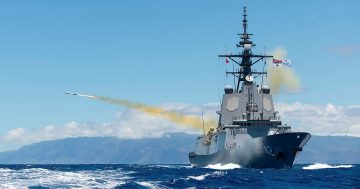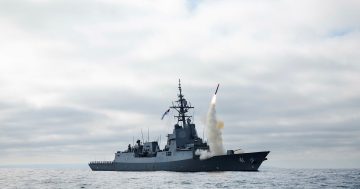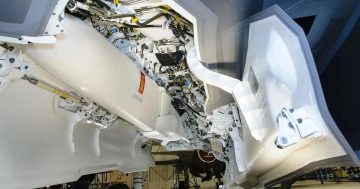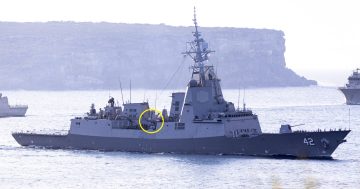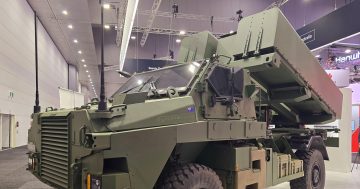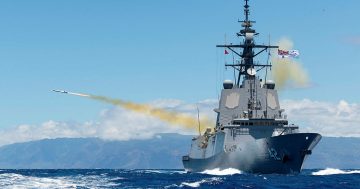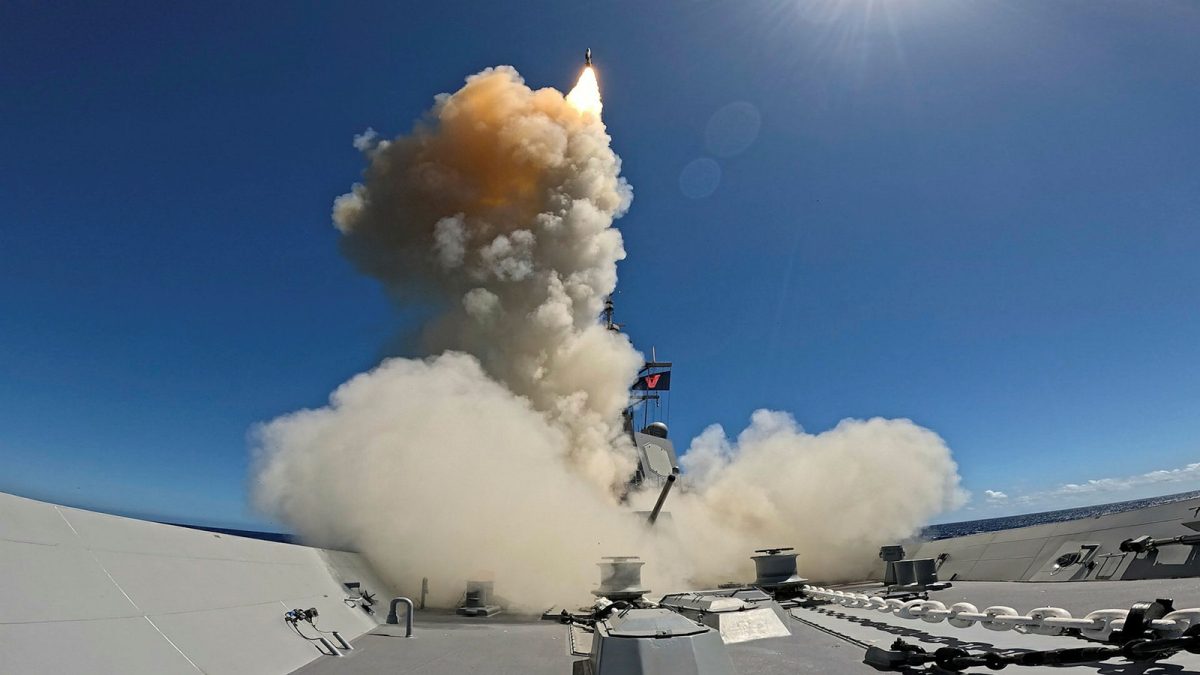
The SM-6 can intercept airborne and surface targets at ranges of at least 140 km from launch. Photo: ADF.
Hot on the heels of the first successful test of a new anti-ship missile last month, the Royal Australian Navy has conducted the first test firing of a new long-range air defence missile.
The Hobart class destroyer HMAS Sydney conducted the Raytheon RIM-174 Standard Extended Range Active Missile (ERAM) – more commonly called the Standard Missile 6 (SM-6) – test firing at the US Navy’s Hawaii missile test range during Exercise Pacific Dragon 2024 on 5 August, and also fired the first KONGSBERG Naval Strike Missile (NSM) during Exercise RIMPAC 2024 off Hawaii last month.
The RAN has ordered an undisclosed number of SM-6s as well as additional SM-2ER missiles under Project SEA 1300 Phase 1.
The SM-6 has a range of more than 140 km and is a ship launched air defence missile which can defend against airborne targets such as aircraft, helicopters, drones, and hypersonic, cruise, and ballistic missiles.
Not often talked about is the SM-6’s ability to also attack surface targets such as shore-based air defence systems, or enemy vessels.
Based on the SM-2/SM-2ER surface-to-air missile (SAM) series which is already in service with the RAN, the SM-6 is launched from vertical launch system (VLS) tubes, and guided by the destroyer’s SPY-1D radar and Aegis combat system.
Alternatively, the SM-6 can also be guided by offboard systems such as another ship, or an aircraft such as the F-35A or E-7A via the Naval Integrated Fire Control-Counter Air (NIFC-CA) architecture, an integrated network used by the US Navy and RAN.
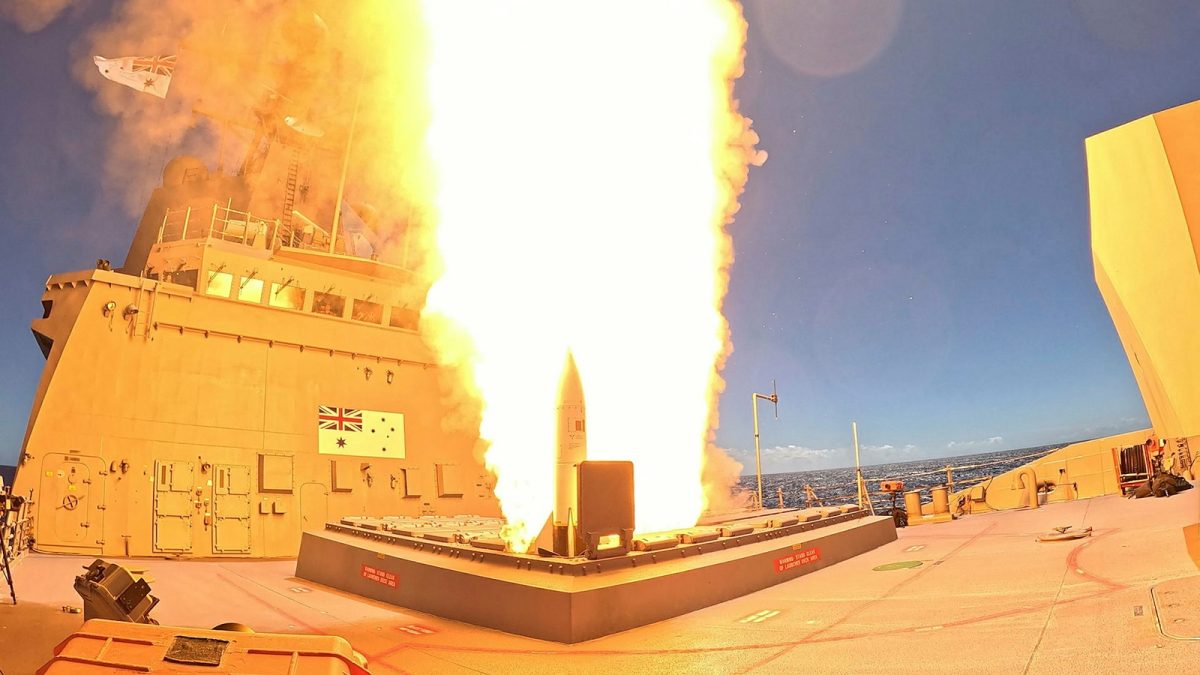
The SM-6 leaves HMAS Sydney’s VLS tubes on launch. Photo: ADF.
The SM-6 uses the airframe of the earlier SM-2ER Block IV missile, but adds the active radar seeker from the AIM-120C-7 advanced medium range air-to-air missile (AMRAAM) in place of the SM-2’s semi‑active seeker. This allows it to self-target and defeat agile targets beyond the range of the launch vessels’ or other radars.
The addition of the new missiles to the RAN’s three-ship Hobart class precedes a comprehensive upgrade for the vessels which will include enhanced radars, the Baseline 9 enhancement of the Aegis combat system, and other modifications.
Minister for Defence Industry and Capability Delivery Pat Conroy said the test was an example of the acceleration of acquisitions of critical naval capabilities designed to enhance lethality within the surface combatant fleet.
“Standard Missile 6 is being acquired from the United States and will provide Navy’s surface combatants with an enhanced air and missile defence capability, increasing the fleet’s lethality and survivability,” he said.
“The ability to deter an adversary from extended ranges and to deter attempts to project power against Australia is a core part of the National Defence Strategy.”
Chief of Navy Vice Admiral Mark Hammond added, “HMAS Sydney’s first-of-class firings of both NSM and SM-6 in less than a month is a clear demonstration of Navy’s intent to deliver on our commitment to accelerate our ability to support Defence’s strategy of denial in concert with our key allies and partners.
“Delivering on both of these key milestones in this accelerated timeframe is a testament to the hard work and dedication of a committed team of people from across Navy, Defence, industry and international partners.”
Of likely interest to the ADF is a new air-launched version of the SM-6 which the US Navy has recently fielded for the first time. The AIM-174B has been spotted on the wing of Boeing F/A-18E/F Super Hornets on US Navy aircraft carriers in recent weeks, including at the RIMPAC exercise, and on the deployment of a carrier in the South China Sea and the Persian Gulf.


